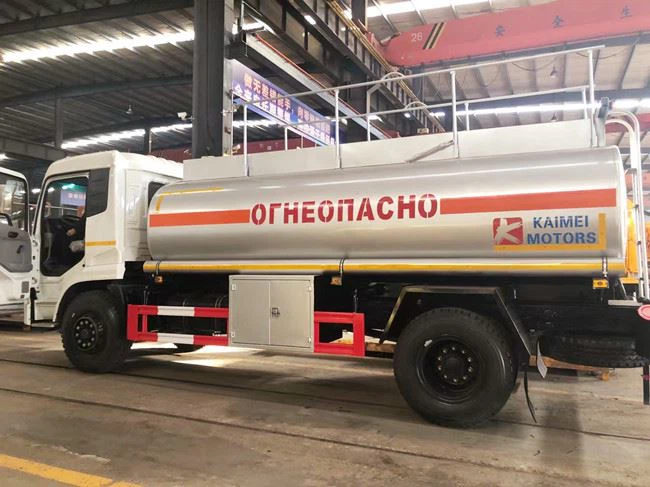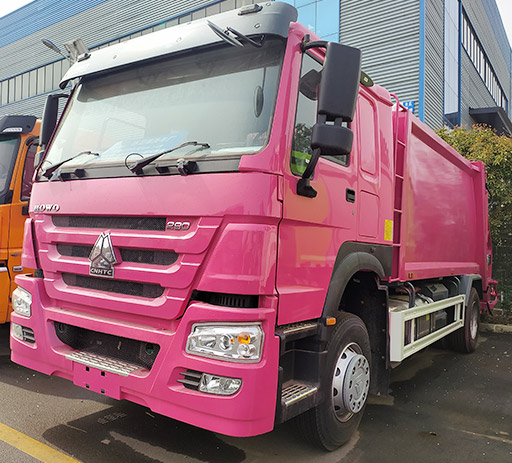Introduction to Rubbish Bin Trucks
Rubbish bin trucks, commonly known as garbage or waste collection trucks, play a vital role in maintaining the cleanliness and hygiene of our urban environments. These specialized vehicles are designed to collect and transport waste materials from residential, commercial, and industrial areas to disposal or recycling facilities. Understanding how these machines work, their types, maintenance, and operational practices can help us appreciate their importance in our daily lives. In this article, we will explore the various aspects of rubbish bin trucks, including their different types, operational mechanisms, maintenance tips, and much more.
Types of Rubbish Bin Trucks
1. Rear Loader Trucks
Rear loader trucks are one of the most common types of rubbish bin trucks. They have a sloped back that allows garbage to be loaded from the rear. Operators typically use a foot pedal or lever to lift the bin and dump its contents into the truck.
2. Front Loader Trucks
Front loader trucks are designed for larger bins, often found in commercial environments. They feature a lifting mechanism at the front, allowing the truck to pick up large containers and empty them quickly.
3. Side Loader Trucks
Side loader trucks can efficiently navigate narrow streets, as they have a side-loading mechanism. This allows for the collection of waste without requiring the truck to stop in the middle of the road, minimizing traffic disruption.
4. Automated Collection Trucks
Automated collection trucks use sophisticated robotic arms to lift and dump bins without manual labor. This technology improves safety and efficiency in waste collection.
5. Compaction Trucks
These trucks are designed to compact waste material to maximize space. A compactor compresses the waste, allowing the truck to carry more and reduce the number of trips to the disposal site.

How Rubbish Bin Trucks Work
Loading Mechanism
The loading mechanism varies by truck type but generally involves hydraulic systems that lift, tilt, or grip waste containers. This enables efficient loading and unloading of waste.

Compaction Process
Compaction is a key feature of rubbish bin trucks, especially for those equipped with a compactor. The waste is compacted using a hydraulic ram, which reduces its volume, making it easier to transport.
Waste Segregation
Modern rubbish bin trucks often have separate compartments for recyclable materials, waste, and compost. This segregation ensures effective recycling and waste management.
Selection Criteria for Rubbish Bin Trucks
1. Type of Waste
When selecting a rubbish bin truck, it is essential to consider the type of waste being collected. Different types of waste may require specific truck models, especially if hazardous materials are involved.
2. Route Considerations
Urban areas with narrow streets may benefit from smaller, more agile trucks, while larger trucks are better suited for major highways and commercial zones.
3. Capacity Requirements
The capacity of a rubbish bin truck is crucial. Trucks need to be able to handle the volume of waste collected without frequent trips for disposal.
Maintenance of Rubbish Bin Trucks
Regular Inspections
Frequent inspections of the hydraulic systems, compaction mechanisms, and lifting equipment are necessary to ensure optimal functionality. Proper documentation of maintenance can prevent costly repairs in the future.
Cleaning and Sanitization
Regular cleaning of the truck’s interior and exterior is vital. Sanitization can prevent odors and the growth of bacteria and other pathogens, contributing to a hygienic waste collection process.
Tire Maintenance
Since rubbish bin trucks often operate in challenging conditions, tire maintenance is crucial for safety and efficiency. Regularly check tire pressure and tread wear to ensure optimal performance.
Environmental Impact of Rubbish Bin Trucks
Reducing Carbon Footprint
With advancements in technology, many rubbish bin trucks now use cleaner fuels and hybrid systems, significantly reducing their carbon footprint. This shift contributes to more sustainable waste management practices.
Promoting Recycling
By integrating features that promote waste segregation, rubbish bin trucks aid in recycling efforts, ensuring that recyclable materials are not lost in landfills.
Future Trends in Rubbish Bin Trucks
Smart Technology Integration
The future of rubbish bin trucks lies in smart technology, such as GPS tracking for route optimization and sensors for monitoring waste levels in bins. This technology can lead to more efficient waste collection processes.
Electric Rubbish Bin Trucks
As cities aim for greener solutions, electric rubbish bin trucks are becoming more popular. These vehicles reduce noise pollution and are more environmentally friendly than their diesel counterparts.
Practical Examples of Rubbish Bin Truck Operations
Case Study: Successful Operations in Urban Areas
In many metropolitan areas, rubbish bin trucks operate on a specific schedule. For instance, City X employs automated trucks for residential waste collection, which has improved efficiency by 30%. The use of GPS technology allows for real-time monitoring and scheduling, ensuring minimal disruption to traffic.

Implementation of Waste Segregation Systems
City Y adopted a new waste segregation initiative using side loader trucks that separate recyclables from general waste. This initiative led to a 20% increase in recycling rates within the first six months.
Frequently Asked Questions (FAQ)
1. What is the average lifespan of a rubbish bin truck?
The average lifespan of a rubbish bin truck can range from 10 to 15 years, depending on usage and maintenance.
2. How often should rubbish bin trucks be serviced?
Rubbish bin trucks should undergo servicing at least every six months, although more frequent checks may be necessary in high-usage scenarios.
3. Can rubbish bin trucks collect hazardous waste?
Only specific types of rubbish bin trucks are designed to handle hazardous waste, and it is regulated strictly by environmental laws.
4. What materials can typically be collected by rubbish bin trucks?
Rubbish bin trucks typically collect general household waste, recyclables (like metals, plastics, and paper), and organic waste, depending on local regulations.
5. Are rubbish bin trucks environmentally friendly?
Many modern rubbish bin trucks are designed to be more environmentally friendly, employing cleaner technologies and waste segregation to support recycling efforts.
6. What innovations are shaping the future of rubbish bin trucks?
Innovations include electric trucks, smart route optimization through GPS, and automated waste collection systems, which are enhancing efficiency and sustainability in waste management.